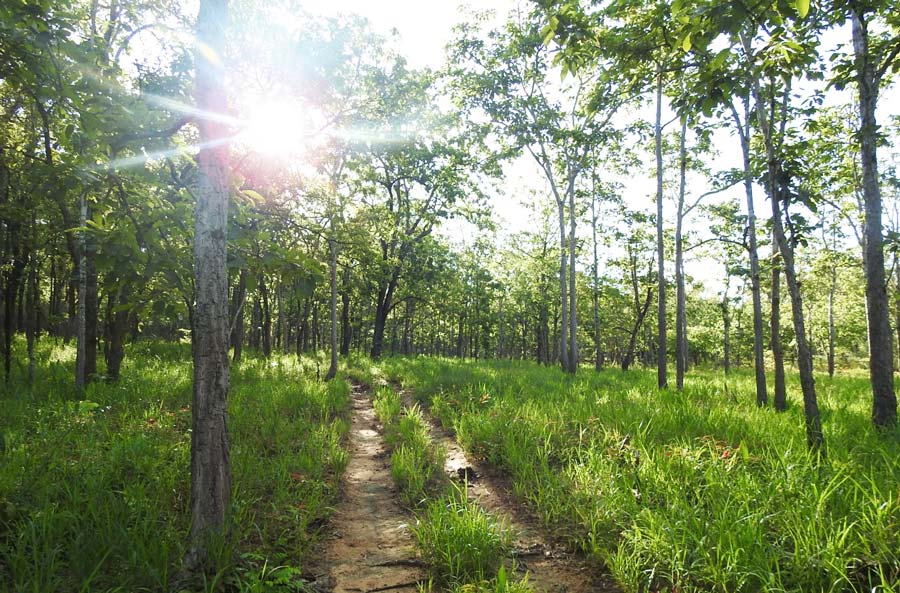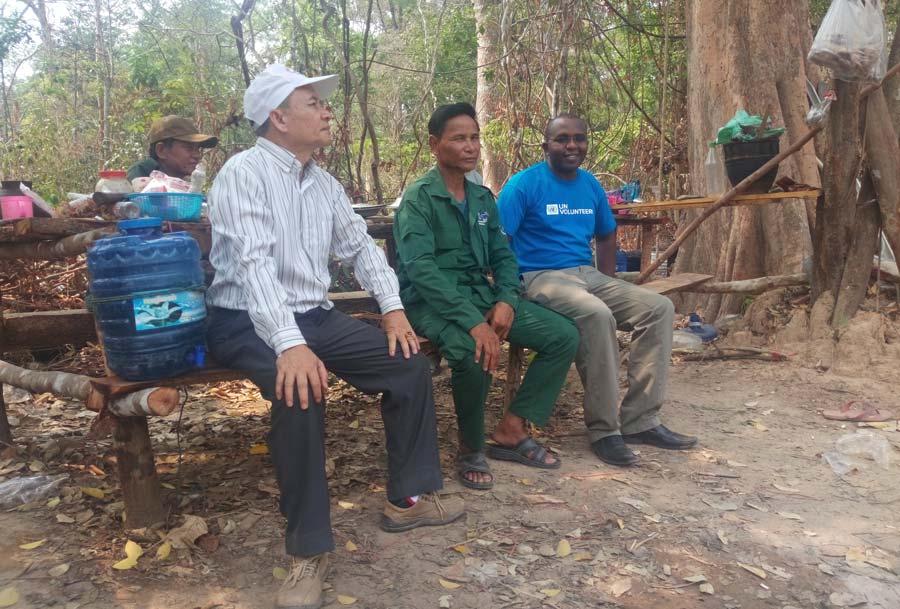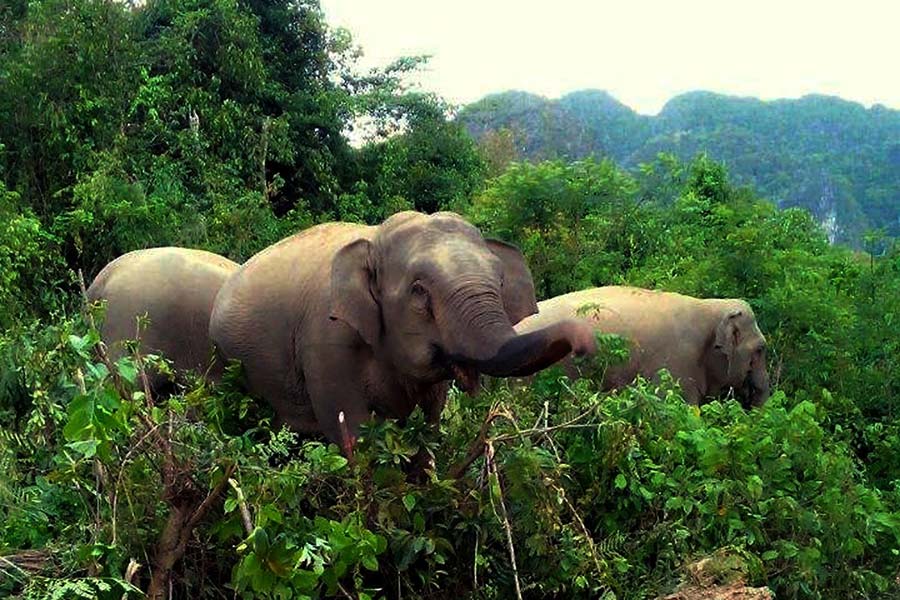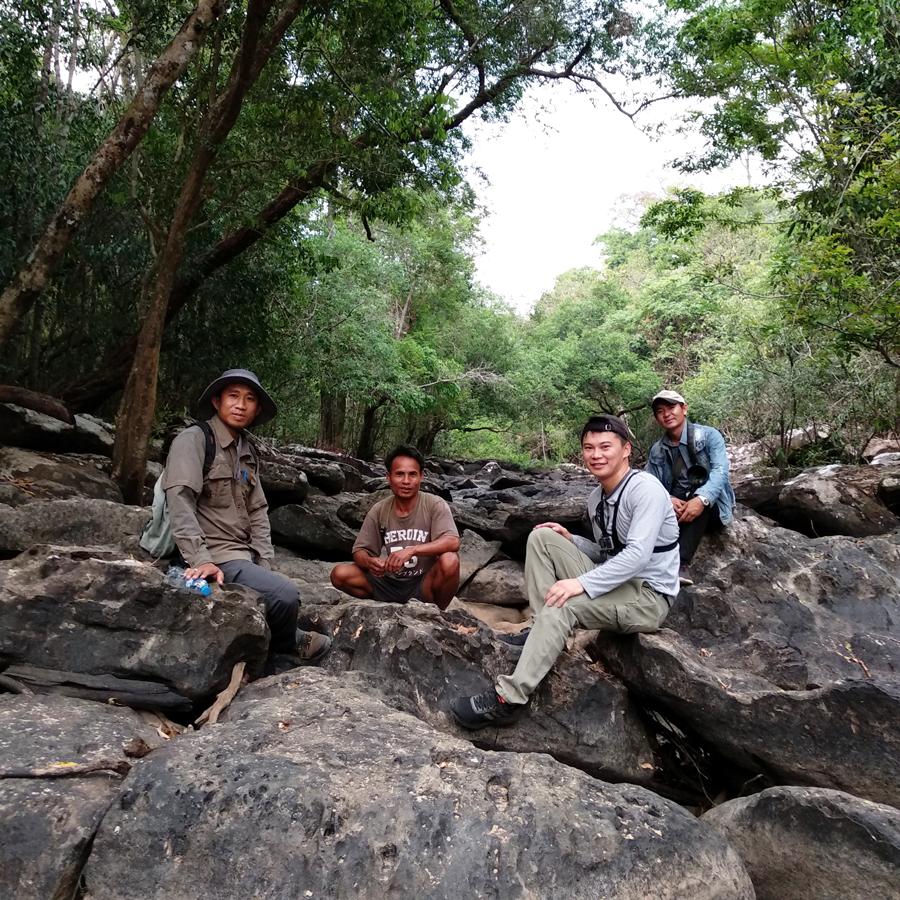The SAFE Ecosystem Project is implemented by the Department of Forestry at Ministry of Agriculture and Forestry with the support from UNDP and Global Environment Facility (GEF) and was launched in October 2016. The project aims to facilitate a transformative shift towards sustainable land and forest management in the forested landscape of Savannakhet Province in order to secure critical wildlife habitats, conserve biodiversity and maintain a continuous flow of services, including quality water provision and flood prevention.

Bernard Bett (Kenya) obtained his Masters in Rural Development and Agribusiness in 2012 from Hungary and began working in monitoring and evaluation for projects on environment conservation and natural resource management. After gaining substantial experience with a number of international non-governmental organizations in East Africa, Bernard decided to move continents in January 2019, bringing his expertise and skills to serve with UNDP’s SAFE Ecosystem Project as a UN Volunteer.
I believe people should not be scared to try to make a difference, we all have different skills and knowledge, use those skills and knowledge to make a difference and achieve the development goals. --UN Volunteer Bernard Bett (Kenya), UN Volunteer Project Coordination, Monitoring & Evaluation Officer for the SAFE Ecosystem Project under UNDP

Being a UN Volunteer has provided Bernard with the opportunity to contribute to efforts to conserve the environment, as well as support the development of communities, while experiencing the cultural diversity.
I am proud to be contributing to the SAFE Ecosystem Project. The way the project has supported the local community to build their capacity to be able to deliver the goal – forest restoration and conservation – strengthens my motivation. When you go to the community, you get to experience in person their aspirations and their potential. As a UN Volunteer, this has given me the opportunity to accelerate the efforts to build their capacity and give them tools to implement the changes in the level they can. --UN Volunteer Bernard Bett

The project also supports the protection and monitoring of several globally endangered and critically endangered species within the Dry Dipterocarp Forest landscape. This includes Eld’s Deer, Siamese Crocodiles, Asian Elephants, Silvered Leaf Monkeys and Red-shanked Douc Langurs.

Community participation, coupled with public awareness on their importance, have greatly supported the protection of these species in recent years. The skills and contributions of UN Volunteers have been vital to the work and success of the project. Over the years, we have had four UN Volunteers contributing with enthusiasm and passion towards the SDGs for life on land and climate action, wihch are key pillars of this project. --Adam Thomas Starr, Technical Specialist, SAFE Ecosystems Project

The project is also strengthening the capacity of the local community to produce tree seedlings and actively participate in forest conservation efforts.
It is important that we not only stop deforestation, but also increase forestation management capacity. I believe that what citizens can do is contribute to planting trees, particularly natural trees species and food trees close to their households, as we need trees in reducing the effects of climate change. --Bernard Bett

UN Volunteer Purevjav Tumendemberel (Mongolia) is supporting the eco-tourism activities of the project. He develops communication materials to promote responsible, inclusive and community-based tourism in Savannakhet Province.
The project has already launched one ecotourism site out of the four targets to be achieved by the end of the project. The second ecotourism site is expected to be launched before the end of the year.
Being able to contribute to the Sustainable Development Goals through this UN Volunteer opportunity is a great honour for me. Serving as a UN Volunteer certainly has its personal and professional benefits, from exploring new cultures to gaining international experience. --UN Volunteer Purevjav Tumendemberel

The project targets the development of alternative sources of income through a number of livelihood activities, such livestock farming and ecotourism, in order to reduce household dependency on timber, which is a source of livelihoods that results in deforestation.
The photo shows local women drying mushrooms, an example of non-timber harvesting income generation in the Dry Dipterocarp Forest, Savannakhet Province, Lao PDR. ©UNDP, 2016
I strongly believe in the power of volunteerism and how it brings change to communities. The project is introducing sustainable land and forest management in Savannakhet Province to conserve biodiversity and wildlife habitats. We help local government and stakeholders to develop an enabling policy environment and sustainable financing mechanisms. --UN Volunteer Purevjav Tumendemberel
Bernard and Purevjav, like hundreds of volunteers across the world, are committed to conserving biodiversity and protecting the environment for future generations, to the best of their ability.
